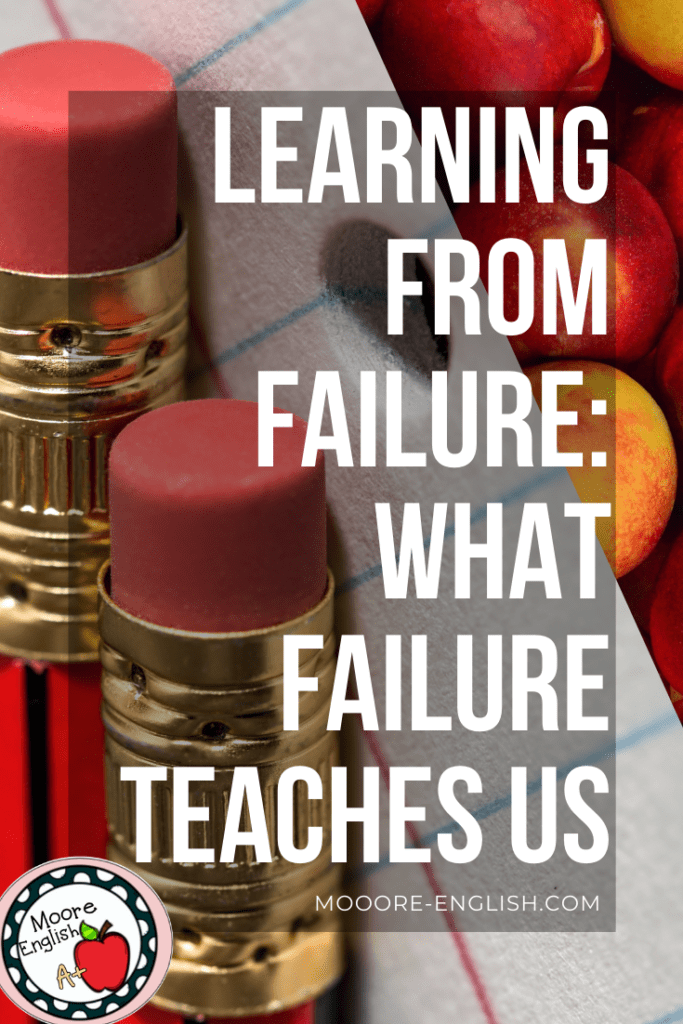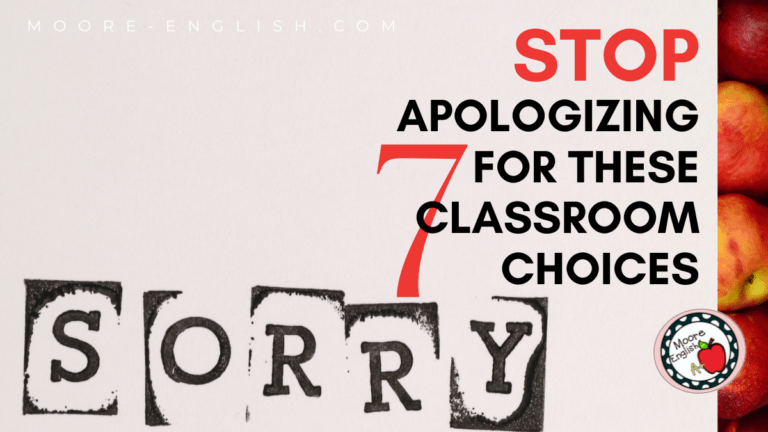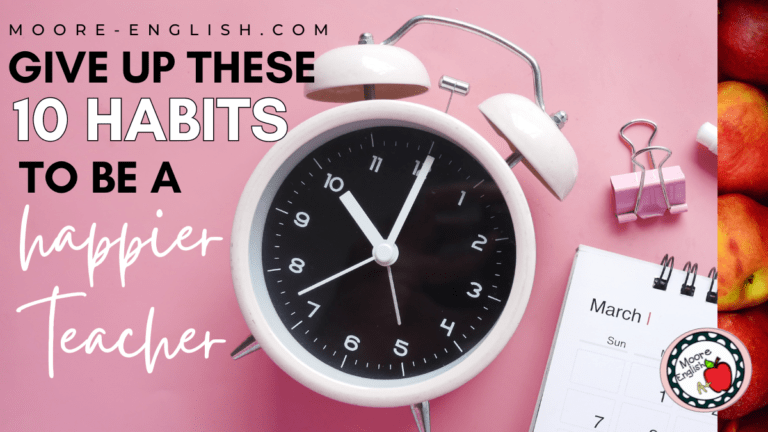Earlier this week, I spent a day in my district’s curriculum office revising the pacing guide for our World Literature class. As a result, I missed a day of teaching, so my students had a sub. After several years of coaching debate and missing a lot of school because of it, I am something of an expert at leaving sub plans. I have a great system (using this free tool) in place.
However, this time, my sub plans went awry! I forgot to post an assignment on Google Classroom. But then my sub also handed my juniors, who are working on identifying different types of prepositional phrases, my sophomores’ relatively benign grammar quiz. Thankfully my juniors realized they had the wrong quiz, but the mix-up still made me wonder where I went wrong. In this case, I think something as simple as additional highlighting on the plans may have made a difference.
But this also got me thinking about other times I have learned from failure. Hopefully this list of lessons learned will help other teachers avoid some of my mistakes.
This post this post may contain affiliate links. Please read the Terms of Use.
Learning About Management from Failure
Seating Charts: When I was a new teacher, I had this utopian idea that all my students should sit in groups. They would learn about team work and community. That’s a perfectly fine perspective. But, at the time, I did not have the classroom management to handle this seating situation. In fact, I quickly learned that seating charts are a great management tool. I still believe that students deserve to learn about team work and community. But I incorporate those concepts through flexible grouping, movement, and discussion.
Asking for Help: My third year of teaching, I had a class of fifteen senior boys. They were all enrolled in our district’s vocational program, so they had wide knowledge of auto collision but not a great interest in English. As a result, we read a lot about car repair and automotive technology. One of our persuasive lessons was to design a Craig’s List post persuading buyers. However, as a third-year teacher, for every innovative idea I had, there was at least one or two things I could have done differently.
For example, because I didn’t use a strong seating chart, the boys were put in positions to make all kinds of poor choices. One time they threw a taco. One week they were fascinated by spit balls. Once or twice they tried to staple their own hands. It was not good, and I did not know how to ask for help. However, once I started contacting parents (with this free form), counselors, and coaches, things got better. A group of people were now working to make this class meaningful.
I still think about this all time, wishing I had started reaching out sooner, wishing I had shared some positives before I had to share concerns. This is a lesson I am still learning and still working on. In fact, one of my classroom goals for the year focuses on increased parent contact. Bottom line: building relationships with students, parents, and other stakeholders helps in all areas of the classroom.
Learning From Failure: What Failure Teaches Us
Rubrics Forever: One of my department’s strengths is our use of common rubrics. This is an absolute saving grace. But there have been times when I did not use this strength as well as I could have. For my first several years of teaching, students would write a draft, I would provide feedback, they would revise, and only then would I apply the rubric. This gave my students a sense of betrayal as though I were suddenly changing the rules halfway through the game.
As a result, I learned that students should see the rubric (check out my favorite here) from day one. While we work on a paper or project, we consider different exemplars and apply the rubric. We then discuss exemplar strengths, weaknesses, and concerns. When my students turn in a draft, they grade themselves in one color; then I provide draft feedback using the rubric. This gives students clear areas where they can focus for improvement. We repeat the process for the final copy. As a result, I rarely have students question their grades.
Technology Helps: My school is now 1:1 Chromebooks, but when I started teaching, we just had some laptop carts. As a result, when students submitted papers, they had to print everything. School technology being what it is, printing would take an entire class period. It was not an efficient use of class time. It led to all kinds of opportunities for students to make poor life choices. Thankfully, a co-worker introduced me to Google Docs early on! Even before Google Classroom, my students were able to share a draft with me, alleviating the need to waste precious instructional minutes in the blackhole of printing. Ultimately, my takeaway here is that classroom technology is invaluable. The greater lesson is that classroom minutes are precious and any activity that suggests otherwise sends the wrong message.
Learning About Instruction from Failure
Brainstorming: When I started writing today’s blog post, I typed out an outline of headings and subheadings, creating a kind of roadmap. This structure helped me decide which lessons to prioritize and which failures were the most instructional. Clearly, brainstorming is an important part of the writing process. I ignored that insight for a long time, which you can read about here. As a result, I have learned that my students deserve to spend a portion of class time developing evidence of brainstorming. To make sure that all students are able to find a brainstorming style that works for them, I developed this tool.
Setting Discussion Norms: This year when my sophomores began reading Julius Caesar, our first day of reading and “acting” was giggle heavy. We could not get into a meaningful rhythm to make sure we understood the play. As a result, I decided to take a step back and ask students to establish norms for reading, acting, and discussing the play. I don’t know why I wasn’t doing this from the very beginning! By posting the norms and revisiting them at the top of each lesson, students were better able to focus on the play. Once I did this with my sophomores, I started doing the same thing with my juniors before peer revision and Socratic Seminar. What a quick way to help students take ownership of their behaviors!
Epilogue: What I’ll Learn Next
Teaching is a process of continual learning. As my sub snafu this week reveals, some failures are easily remedied with a highlighter. Other moments of failure are more pervasive and require reflection. Nevertheless, learning from failure remains one of the most important factors in growing and developing. When teachers model the process of learning for their students, I see hope for the future. What are the lessons you have learned as a teacher?








